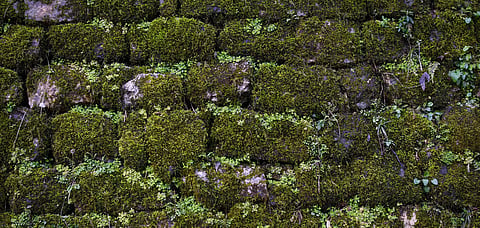
- Destinations
- Experiences
- Stay
- What's new
- Celebrating People
- Responsible Tourism
- CampaignsCampaigns
- SubscribeSubscribe
- Buy Now

There are many reasons you would want to visit Japan and one of those is for its charming, old-world moss lawns. The delicate, dewy felt-like organism has a godly status in the country&mdashKyoto&rsquos premier attraction of Saiho-ji, or Moss Temple, needs an application to visit. And who can forget the whole moss-viewing-parties and moss-girl fad
The good news is that now you don&rsquot need to wait to visit Japan to see an actual moss garden. The garden, developed by the state forest department&rsquos Research Advisory Committe under the CAMPA scheme, was inaugurated recently in Khurpatal in Nainital district, by renowned water conservationist Rajendra Singh&mdashalso known as the Waterman of India.
Spread over 10 hectares, it has a trail that runs a little over a kilometre, exhibiting 30 species of the bryophyte, with two (Cement Moss and Brachythecium Buchanani) even featuring in International Union for Conservation of Nature&rsquos (IUCN) red list. Earlier this year, India's first Lichen Park also came up at Munsiyari.
Mosses, believed to be among the first plants on earth, are a non-vascular plant (simple, low-growing species that do not flower) that reproduce using spores. Mosses often grow in the damp, without much sunlight, and show extraordinary sensitivity to outside environment. Being more receptive to air and rain, they can act as excellent bioindicators of environmental degradation.
The Western Himalayas have always been known for their rich moss cover, and the Kumaon region displays an especial luxuriance of the bryophyte. If you&rsquove ever travelled in the mountains during the monsoon, chances are that you have seen it luxuriating on rocks, concrete benches and bare hillsides&mdashand avoiding stepping on it on hikes lest you twist your ankle.
Known as just Moss Garden, it has been developed as both a centre for conservation of the mosses and other bryophytes of the region and as a recreation spot for those journeying around the hill station. In addition to the moss trail, one will also find an interpretation centre with exhibits such as the one illustrating the use of the Sphagnum variety that was used to dress wounds in the First World War. Sphagnum moss is known to absorb moisture a lot quicker than cotton, in addition to being an effective antiseptic.
The other attractions in the garden include a dinosaur installation in a nod to the prehistoric antecedents of the bryophyte. One will also see a moss terrarium displaying an actual ecosystem, moss ornaments that are again a huge craze among the Japanese, and a bird&rsquos nest employing moss to regulate temperature and keep bacteria away.
Headed to Kumaon Don&rsquot Miss India&rsquos first moss garden
